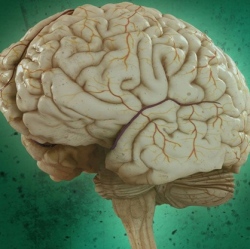
Scientists have developed a 3D brain organoid that could have applications in drug discovery and disease modeling. They say this is the first engineered tissue-equivalent to closely resemble normal human brain anatomy, containing all 6 major cell types, including neurons and immune cells.
The advanced 3-D organoids promote the formation of a fully cell-based, natural, and functional version of the blood brain barrier (a semipermeable membrane that separates the circulating blood from the brain, protecting it from foreign substances that could cause injury).
The new artificial organ model can help improve understanding of disease mechanisms at the blood brain barrier (BBB), the passage of drugs through the barrier, and the effects of drugs once they cross the barrier.
Faster drug discovery and screening
The shortage of effective therapies and the low success rate of investigational drugs are (in part) due to the fact that we do not have human-like tissue models for testing, according to senior author Anthony Atala, M.D., director of WFIRM. “The development of tissue-engineered 3D brain tissue equivalents such as these can help advance the science toward better treatments and improve patients’ lives,” he said.
The development of the model opens the door to speedier drug discovery and screening. This applies both to neurological conditions and for diseases like HIV, where pathogens hide in the brain; and to disease modeling of neurological conditions, such as Alzheimer’s disease, multiple sclerosis and Parkinson’s disease. The goal is to better understand their pathways and progression.
“To date, most in vitro [lab] BBB models [only] utilize endothelial cells, pericytes and astrocytes,” the researchers note in a paper. “We report a 3D spheroid model of the BBB comprising all major cell types, including neurons, microglia, and oligodendrocytes, to recapitulate more closely normal human brain tissue.”
So far, the researchers have used the brain organoids to measure the effects of (mimicked) strokes on impairment of the blood brain barrier, and have successfully tested permeability (ability of molecules to pass through the BBB) of large and small molecules.
